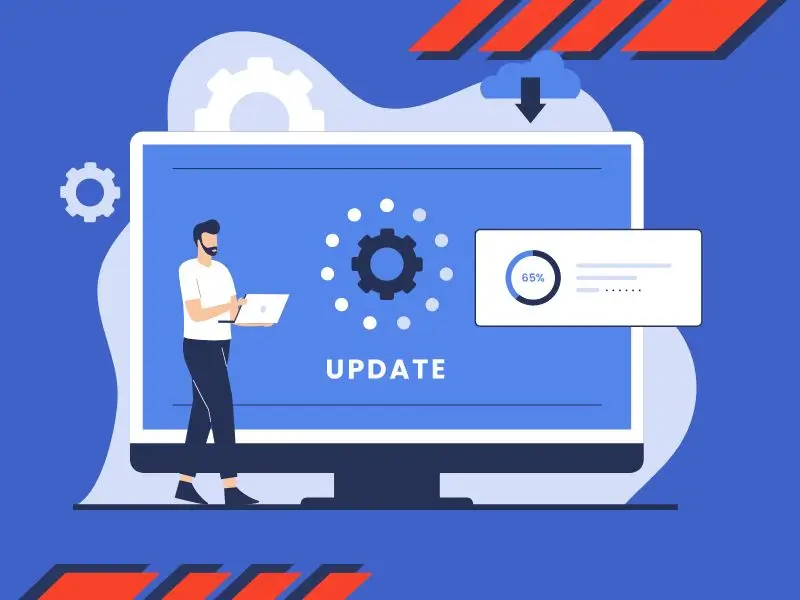
Introduction
In today’s rapidly evolving business landscape, leveraging the latest technological advancements is crucial for maintaining a competitive edge. One such innovation is the shift of traditional accounting software to the cloud. Tally Prime or Tally ERP9, a popular accounting software, has also embraced this trend with Tally on Cloud. But is moving your accounting processes to the cloud the right choice for your business? Let’s explore the pros and cons of using Tally in the cloud to help you make an informed decision.
The Pros of Using Tally Prime in the Cloud
1. Accessibility and Mobility
One of the biggest advantages of using Tally Prime in the cloud is the ability to access your accounting data from anywhere at any time. This feature is particularly beneficial for businesses with multiple locations or for professionals who need to work remotely. With just an internet connection and a device, you can manage your accounts seamlessly.
This flexibility enhances productivity, as it allows for real-time updates and collaboration. Remote work is simplified, enabling team members to stay connected and efficient. The cloud ensures your data is always up-to-date and accessible, reducing downtime and improving workflow. This level of accessibility is a game-changer for modern businesses.
2. Cost Efficiency
Cloud-based solutions often reduce the need for extensive IT infrastructure. With Tally Prime in the cloud, you avoid investing in expensive servers and worrying about maintenance costs. The subscription-based model of cloud services offers predictable monthly expenses, making budgeting easier. This model is often more manageable compared to one-time, large capital expenditures.
By eliminating the need for significant upfront investments, businesses can allocate resources more efficiently. Additionally, cloud providers handle maintenance and updates, further reducing IT burdens. This cost efficiency is a major benefit of moving to a cloud-based Tally solution.
3. Automatic Updates and Backups
With Tally in the cloud, manual software updates and data backups are no longer your concern. Cloud providers handle updates automatically, ensuring you always have access to the latest features and security patches. This means your software is always up-to-date without any effort on your part. Additionally, regular backups protect your data from loss, offering peace of mind.
The automated backup process ensures that your data is safe and can be restored if needed. This eliminates the risk of losing critical information due to hardware failures or other issues. Overall, Tally in the cloud simplifies maintenance and enhances data security, allowing you to focus on your core business activities.

4. Scalability
As your business grows, your accounting needs will evolve. Cloud-based Tally offers the flexibility to scale up or down based on your requirements. This scalability ensures you only pay for what you need, making it a cost-effective solution for businesses of all sizes. By adjusting resources according to your current demands, you avoid unnecessary expenses.
This adaptability is particularly useful for businesses experiencing fluctuating growth. It also allows for quick adjustments during peak seasons or slow periods. With Tally in the cloud, you can efficiently manage costs while supporting your business’s dynamic needs. This feature makes it an ideal choice for evolving businesses.
5. Enhanced Collaboration
Cloud-based Tally enhances collaboration among team members by allowing multiple users to work on the same data simultaneously. This real-time collaboration improves efficiency and productivity, making it easier to manage tasks and projects. It’s especially beneficial for businesses with geographically dispersed teams, as it keeps everyone on the same page regardless of location.
Team members can access and update information instantly, reducing delays and improving decision-making processes. This seamless collaboration fosters a more cohesive working environment and ensures that all team members have the most up-to-date information. Overall, Tally Prime in the cloud streamlines workflows and boosts overall productivity.
The Cons of Using Tally Prime in the Cloud
1. Security Concerns
While cloud providers implement robust security measures, storing sensitive financial data on the cloud can still be a concern for some businesses. The risk of data breaches, unauthorized access, and other cyber threats is always present. To mitigate these risks, it’s essential to choose a reputable cloud service provider with a strong security track record.
Implementing additional security measures, such as two-factor authentication and data encryption, further enhances protection. These steps help safeguard your data against potential threats. However, businesses must remain vigilant and proactive in their security practices. Regularly reviewing and updating security protocols is crucial to maintaining data integrity in the cloud.

2. Internet Dependency
One of the primary drawbacks of cloud-based solutions is their reliance on internet connectivity. Any disruption in your internet service can hinder your ability to access your accounting data. This dependency makes it crucial to have a reliable and fast internet connection. Without a stable connection, you risk interruptions in your workflow and potential delays in accessing critical information.
For businesses in areas with unstable internet, this can be a significant concern. Ensuring a robust internet infrastructure is essential to mitigate this risk. Overall, the effectiveness of cloud-based Tally heavily depends on consistent internet availability.
3. Recurring Costs
Although cloud solutions can be cost-effective, the subscription model means you’ll have ongoing expenses. Over time, these recurring costs can add up and may exceed the one-time cost of on-premises solutions. Businesses need to consider the long-term financial implications of a cloud-based Tally subscription. It’s important to evaluate whether the benefits of the cloud justify the continuous payments.
For some, the convenience and features of cloud-based Tally outweigh the costs. However, others may find traditional on-premises solutions more economical in the long run. Careful financial planning and analysis are essential to make an informed decision.
4. Limited Customization
Cloud-based Tally may offer fewer customization options compared to its on-premises counterpart. Some businesses may find that certain customizations or integrations they need are not supported in the cloud version, which can be a limitation for those with specific or complex requirements.
This limitation could impact the software’s suitability for businesses with unique workflows or industry-specific needs. However, cloud-based solutions often provide a balance between flexibility and standardization, catering to a broader range of users. Businesses should assess their customization needs carefully and evaluate whether the available options in the cloud version of Tally meet their requirements.
5. Data Migration Challenges
Migrating your existing data to the cloud can be a complex and time-consuming process. Ensuring data integrity and minimizing downtime during the transition are critical considerations. Businesses must plan and execute the migration carefully to avoid potential disruptions. This involves assessing the compatibility of existing data formats with the cloud infrastructure and conducting thorough testing before the actual migration.
Additionally, data security measures should be in place to protect sensitive information during the transfer. Collaborating with experienced IT professionals or consultants can streamline the migration process and reduce the risk of data loss or corruption. Despite the challenges, a well-executed migration can unlock the benefits of cloud-based Tally in terms of accessibility, scalability, and efficiency.

Conclusion
Tally Prime or Tally ERP9 in the cloud presents numerous advantages, including enhanced accessibility, cost efficiency, scalability, automatic updates, and improved collaboration. However, it also comes with challenges such as internet dependency, security concerns, recurring costs, limited customization, and data migration difficulties.
When deciding whether to move Tally to the cloud, businesses should carefully weigh these pros and cons based on their specific needs and circumstances. By doing so, they can make a strategic decision that aligns with their operational goals and long-term vision.